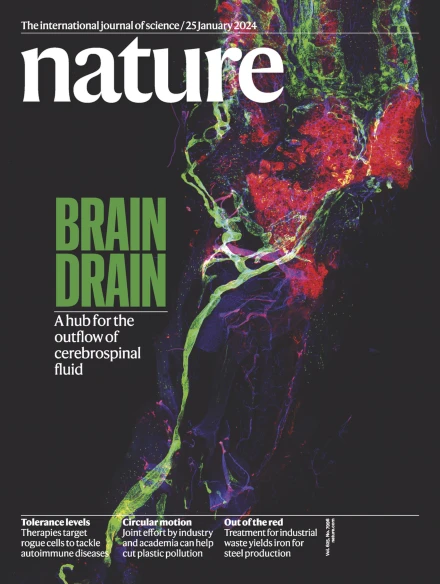Long-distance coherent quantum communications in deployed telecom networks
IF 50.5
1区 综合性期刊
Q1 MULTIDISCIPLINARY SCIENCES
引用次数: 0
Abstract
Recent advances in quantum communications have underscored the crucial role of optical coherence in developing quantum networks. This resource, which is fundamental to the phase-based architecture of the quantum internet1, has enabled the only successful demonstrations of multi-node quantum networks2–4 and substantially extended the range of quantum key distribution (QKD)5. However, the scalability of coherence-based quantum protocols remains uncertain owing to the specialized hardware required, such as ultra-stable optical cavities and cryogenic photon detectors. Here we implement the coherence-based twin-field QKD protocol over a 254-kilometre commercial telecom network spanning between Frankfurt and Kehl, Germany, achieving encryption key distribution at 110 bits per second. Our results are enabled by a scalable approach to optical coherence distribution, supported by a practical system architecture and non-cryogenic single-photon detection aided by off-band phase stabilization. Our results demonstrate repeater-like quantum communication in an operational network setting, doubling the distance for practical real-world QKD implementations without cryogenic cooling. In addition, to our knowledge, we realized one of the largest QKD networks featuring measurement-device-independent properties6. Our research aligns the requirements of coherence-based quantum communication with the capabilities of existing telecommunication infrastructure, which is likely to be useful to the future of high-performance quantum networks, including the implementation of advanced quantum communication protocols, quantum repeaters, quantum sensing networks and distributed quantum computing7. A twin-field quantum key distribution protocol based on optical coherence is deployed over a 254-kilometre commercial telecom network, demonstrating that coherence-based quantum communication can be aligned with existing telecommunication infrastructure.

部署电信网络中的远距离相干量子通信
量子通信的最新进展强调了光相干在发展量子网络中的关键作用。该资源是量子互联网基于相位架构的基础1,使多节点量子网络的唯一成功演示2 - 4成为可能,并大大扩展了量子密钥分发(QKD)的范围5。然而,基于相干的量子协议的可扩展性仍然不确定,因为需要特殊的硬件,如超稳定的光学腔和低温光子探测器。在这里,我们在法兰克福和德国凯尔之间的254公里商业电信网络上实现了基于相干的双场QKD协议,实现了每秒110比特的加密密钥分发。我们的结果是通过一种可扩展的光学相干分布方法实现的,该方法由实用的系统架构和非低温单光子检测支持,并辅以带外相位稳定。我们的研究结果展示了在操作网络设置中类似中继器的量子通信,在没有低温冷却的情况下将实际QKD实现的距离增加了一倍。此外,据我们所知,我们实现了具有独立于测量设备特性的最大的QKD网络之一6。我们的研究将基于相干的量子通信的要求与现有电信基础设施的能力结合起来,这可能对高性能量子网络的未来有用,包括先进量子通信协议、量子中继器、量子传感网络和分布式量子计算的实现。在254公里的商业电信网络上部署了基于光相干的双场量子密钥分发协议,证明基于相干的量子通信可以与现有的电信基础设施保持一致。
本文章由计算机程序翻译,如有差异,请以英文原文为准。
求助全文
约1分钟内获得全文
求助全文
来源期刊

Nature
综合性期刊-综合性期刊
CiteScore
90.00
自引率
1.20%
发文量
3652
审稿时长
3 months
期刊介绍:
Nature is a prestigious international journal that publishes peer-reviewed research in various scientific and technological fields. The selection of articles is based on criteria such as originality, importance, interdisciplinary relevance, timeliness, accessibility, elegance, and surprising conclusions. In addition to showcasing significant scientific advances, Nature delivers rapid, authoritative, insightful news, and interpretation of current and upcoming trends impacting science, scientists, and the broader public. The journal serves a dual purpose: firstly, to promptly share noteworthy scientific advances and foster discussions among scientists, and secondly, to ensure the swift dissemination of scientific results globally, emphasizing their significance for knowledge, culture, and daily life.
 求助内容:
求助内容: 应助结果提醒方式:
应助结果提醒方式:


